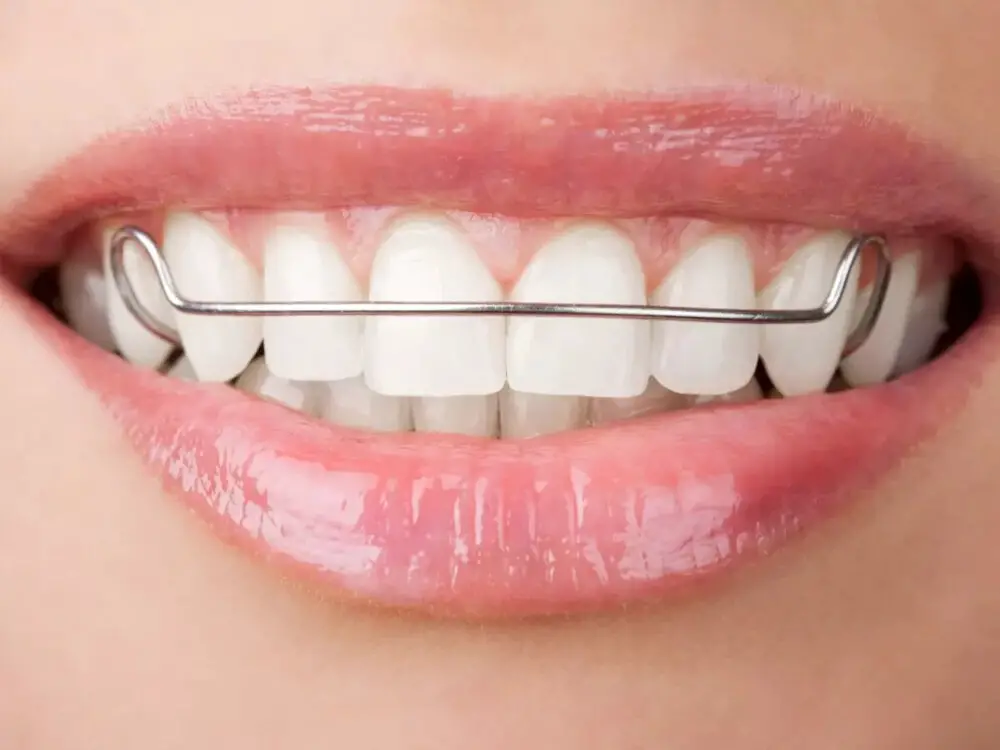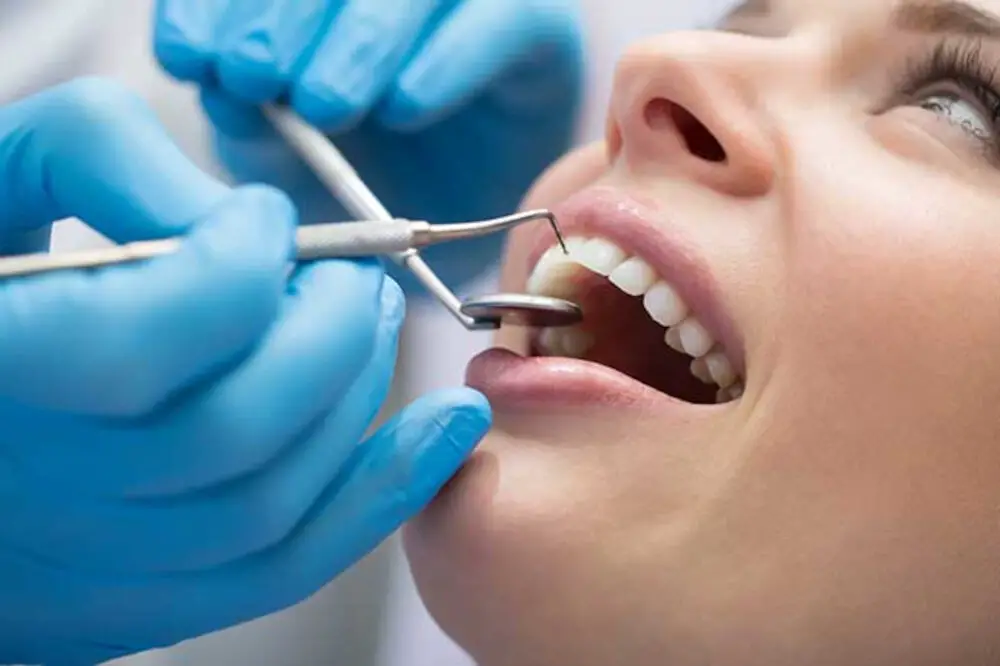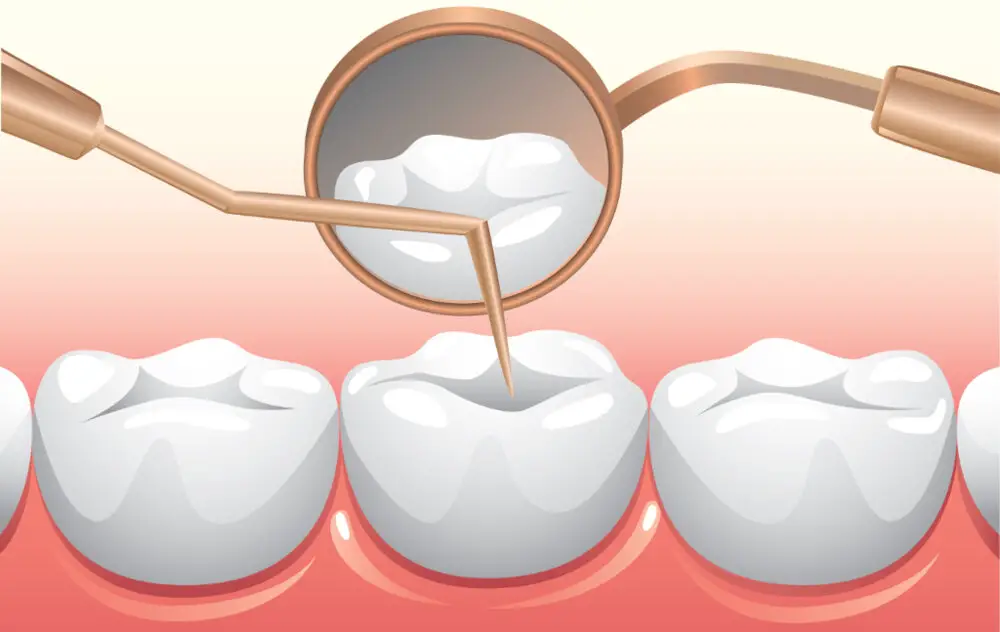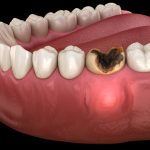Spotting Tartar Buildup: What Does Tartar Look Like on Teeth?

Tartar buildup on teeth is a common dental issue that many people face. Tartar, also known as dental calculus, is a hard, yellowish-brown substance that forms on teeth when plaque is not removed through brushing and flossing. It can be unsightly and cause bad breath, but more importantly, it can lead to gum disease and other serious oral health issues. Identifying tartar buildup on your teeth is essential to maintaining good oral health. Tartar can form above and below the gum line and is often difficult to remove without professional dental care. Understanding what tartar looks like on teeth can help you recognize the signs of buildup and take the necessary steps to prevent it from causing damage to your teeth and gums. In this article, we will explore the appearance of tartar buildup on teeth, its causes, and how to prevent it from developing in the first place.
Tartar buildup is a common dental problem that occurs when plaque, a sticky film of bacteria, mineralizes and hardens on the teeth. This process happens when plaque is not removed through regular brushing and flossing, and it can lead to various oral health issues such as tooth decay, gum disease, and bad breath. Tartar is a yellow or brownish deposit that can form on the teeth near the gum line, and it is often difficult to remove without professional dental cleaning. In addition, tartar can make the teeth look unsightly and cause them to feel rough or bumpy. Therefore, it is important to prevent tartar buildup by practicing good oral hygiene habits and visiting the dentist regularly for checkups and cleanings.
Identifying tartar buildup is crucial for maintaining good oral health. Tartar is a hard, yellow or brown substance that forms on the teeth when plaque hardens. It can lead to gum disease, bad breath, and tooth decay if left untreated. By recognizing tartar buildup, individuals can take preventative measures to stop its progression. Regular brushing and flossing can remove plaque before it hardens into tartar. It is also important to schedule regular dental check-ups to have tartar removed by a professional. Identifying tartar buildup early on can prevent serious oral health issues and keep teeth and gums healthy.
What is Tartar?

Tartar is a hard, yellowish-brown substance that forms on teeth due to the buildup of plaque. When plaque is not removed from teeth regularly, it hardens and turns into tartar. Tartar buildup can lead to a number of dental problems, such as gum disease and tooth decay. It can also cause bad breath and discoloration of the teeth. Tartar is difficult to remove and can only be professionally cleaned by a dentist or dental hygienist. Regular brushing and flossing can help prevent tartar buildup and maintain good oral hygiene. Tartar buildup is a common problem for many people, especially those who do not maintain good oral hygiene habits. It can be easily identified by its yellowish-brown color and hard texture. Tartar can form on any part of the teeth, but it is most commonly found on the back of the teeth and along the gum line. If left untreated, tartar buildup can cause serious dental problems such as gum disease and tooth loss. Therefore, it is important to maintain good oral hygiene habits and visit a dentist regularly to prevent and treat tartar buildup.
Tartar, also known as dental calculus, is a yellowish or brownish hard deposit that forms on teeth due to the accumulation of plaque that has not been removed by regular brushing and flossing. Tartar buildup can cause gum disease, bad breath, and tooth decay. It is usually found near the gum line or between teeth and can only be removed by a dental professional using special tools. Tartar buildup is often a sign of poor oral hygiene and can be prevented by following a regular dental care routine that includes brushing twice a day, flossing daily, and visiting the dentist regularly for cleanings and checkups.
Tartar, also known as dental calculus, is a hardened plaque that accumulates on your teeth and gumline over time. While plaque is a sticky film of bacteria and food particles that can be removed by regular brushing and flossing, tartar is much more difficult to remove and requires professional dental cleaning. Tartar buildup can cause various dental problems, including gum disease, tooth decay, and bad breath. Unlike plaque, tartar can appear yellow or brown in color and has a rough, uneven texture. It can also cause visible staining on teeth and is often found along the gumline or between teeth. Regular dental check-ups and cleanings are essential to prevent and remove tartar buildup.
Causes of Tartar Buildup

Tartar buildup on teeth is a common dental problem that can lead to various oral health issues, including gum disease, bad breath, and tooth decay. Tartar is a hard, yellowish-brown deposit that forms on teeth due to the accumulation of plaque over time. Plaque is a sticky film of bacteria that forms on teeth and gums, which can cause tooth decay and gum disease if not removed regularly through brushing and flossing. When plaque is not removed, it hardens into tartar, which is much more difficult to remove and requires professional dental cleaning. Several factors can contribute to the development of tartar buildup on teeth. Poor oral hygiene is the most common cause of tartar buildup. When teeth are not brushed or flossed regularly, plaque can accumulate on the surface of teeth and harden into tartar. Consuming sugary and starchy foods can also increase the risk of tartar buildup. Bacteria in the mouth feed on these foods and produce acid, which can damage tooth enamel and lead to tartar formation. Additionally, certain lifestyle habits, such as tobacco use and excessive alcohol consumption, can also increase the risk of tartar buildup on teeth. Regular dental check-ups and cleanings are essential for preventing tartar buildup and maintaining good oral health.
Poor dental hygiene is a significant contributor to tartar buildup on teeth. Neglecting regular brushing, flossing, and professional cleanings can lead to the accumulation of plaque, a sticky film of bacteria that forms on teeth. When left untreated, plaque hardens into tartar, a yellow or brownish deposit that can only be removed by a dental professional. Tartar buildup not only causes bad breath and discoloration of teeth, but it also increases the risk of gum disease and tooth decay. Thus, maintaining good oral hygiene habits is crucial in preventing tartar accumulation and promoting overall dental health.
Genetics plays a significant role in determining an individual’s susceptibility to tartar buildup. Studies have shown that some people may have a genetic predisposition to produce more saliva, which helps to naturally wash away bacteria and prevent the accumulation of tartar. Additionally, certain genetic variations may affect the composition of an individual’s saliva, making it more or less effective at neutralizing harmful bacteria. While genetics cannot be changed, individuals who are more prone to tartar buildup can take proactive measures to maintain good oral hygiene practices, such as brushing and flossing regularly, using mouthwash, and scheduling regular dental cleanings.
Diet plays a crucial role in maintaining healthy teeth and gums. Consuming a balanced diet rich in vitamins and minerals, particularly calcium and vitamin D, can help strengthen teeth and prevent decay. On the other hand, a diet high in sugar and carbohydrates can lead to the accumulation of plaque and tartar on teeth, which can ultimately cause tooth decay and gum disease. It is important to limit sugary and acidic foods and drinks, such as soda and candy, and opt for healthier options like fruits, vegetables, and dairy products. Additionally, drinking plenty of water can help wash away food particles and bacteria that can lead to tartar buildup. By making simple dietary changes, individuals can promote better oral health and prevent the need for costly dental treatments down the road.
Symptoms of Tartar Buildup

Tartar buildup is a common dental problem that occurs when plaque hardens on the surface of teeth. Tartar buildup often occurs as a result of poor dental hygiene, but it can also be caused by factors such as smoking, consuming sugary foods and drinks, and genetic predisposition. One of the most common symptoms of tartar buildup is yellow or brown discoloration on the teeth. This discoloration is caused by the accumulation of minerals and bacteria on the surface of the teeth, which can be difficult to remove with brushing alone. In addition to discoloration, tartar buildup can also cause bad breath, gum inflammation, and tooth sensitivity. These symptoms can be particularly uncomfortable and can greatly impact a person’s quality of life, making it important to seek dental treatment as soon as possible. If left untreated, tartar buildup can lead to more serious dental problems such as gum disease and tooth decay. Gum disease is a bacterial infection that affects the tissues surrounding the teeth, causing inflammation and bleeding. Tooth decay, on the other hand, occurs when bacteria in the mouth break down the enamel of the teeth, leading to cavities and other dental problems. To prevent these serious dental problems from developing, it is important to seek dental treatment as soon as possible if you experience any symptoms of tartar buildup. Your dentist can remove the tartar buildup using scaling and root planing, and can also provide you with tips on how to maintain good dental hygiene to prevent tartar buildup from occurring in the future.
Discoloration of teeth is a common dental problem that affects a large number of people worldwide. This issue occurs when the enamel, which is the outermost layer of the tooth, becomes stained or discolored due to various reasons. One of the most common reasons for tooth discoloration is the consumption of certain foods and beverages such as coffee, tea, and red wine. Smoking and poor oral hygiene are also significant contributors to tooth discoloration. Tartar buildup, which is the hardened form of plaque, can also cause discoloration of teeth. Tartar buildup is usually yellow or brown in color and can be easily spotted on the teeth. To prevent tooth discoloration, it is essential to maintain good oral hygiene practices and avoid habits that can stain or damage the teeth.
Bad breath, also known as halitosis, is a common problem caused by the accumulation of bacteria in the mouth. Tartar buildup on teeth can contribute to bad breath by providing a breeding ground for these bacteria. Other factors that can cause bad breath include poor oral hygiene, dry mouth, certain foods, and medical conditions such as gum disease and sinus infections. To prevent bad breath, it is important to brush and floss regularly, use mouthwash, drink plenty of water, and avoid foods that can cause bad breath. If bad breath persists despite these measures, it may be a sign of an underlying medical condition and should be evaluated by a healthcare professional.
One of the common signs of tartar buildup is gum irritation. Tartar, a hardened form of plaque, forms on teeth when bacteria in the mouth react with food particles and saliva. As tartar accumulates, it can irritate the gums, causing redness, swelling, and tenderness. Left untreated, gum irritation can progress to more serious conditions such as gingivitis and periodontitis, which can eventually lead to tooth loss. Regular dental cleanings and good oral hygiene practices, such as brushing twice a day and flossing daily, can help prevent tartar buildup and keep gums healthy.
How to Remove Tartar

Tartar buildup can be a major problem for anyone who is serious about maintaining good oral hygiene. Not only does it make your teeth look unsightly, but it can also lead to serious dental problems if left untreated. Fortunately, there are several effective ways to remove tartar and prevent it from coming back. One of the best methods is to visit your dentist regularly for professional cleaning. During this procedure, your dentist will use special tools to scrape away the tartar and polish your teeth to a smooth, shiny finish. This can help to prevent further buildup and keep your teeth healthy and strong. Another way to remove tartar is to practice good oral hygiene at home. This includes brushing your teeth twice a day with fluoride toothpaste, flossing daily, and using mouthwash to kill bacteria and freshen your breath. You can also try using a tartar control toothpaste that contains special ingredients to help break down and remove tartar buildup. And don’t forget to eat a healthy diet that is rich in calcium and other nutrients that are essential for strong teeth and gums. By following these simple steps, you can keep your teeth looking and feeling great for years to come, and avoid the hassle and expense of dealing with tartar buildup and other dental problems.
Professional dental cleaning is a crucial aspect of dental health care that involves the removal of plaque and tartar buildup from the teeth. Tartar buildup is a hard, yellow or brownish deposit that forms on the teeth due to the accumulation of plaque. It is often difficult to remove through regular brushing and flossing, which is why a professional cleaning is necessary. During the cleaning, a dental hygienist uses specialized tools to remove the tartar buildup from the teeth, leaving them clean and healthy. Regular professional cleanings can prevent the development of gum disease, tooth decay, and other dental problems that can lead to more serious health issues. Therefore, it is important to schedule regular dental cleanings to maintain good dental health.
When it comes to tartar buildup on teeth, prevention is key. While professional dental cleanings are the best way to remove tartar, there are also several at-home remedies that can help keep teeth clean and healthy. One of the most effective ways to prevent tartar buildup is to brush your teeth twice a day with fluoride toothpaste and floss daily. Additionally, using an antiseptic mouthwash can help kill bacteria and freshen breath. Eating a healthy diet that’s low in sugar and high in fiber can also help keep teeth clean by stimulating saliva production, which naturally fights bacteria in the mouth. Finally, avoiding tobacco products and limiting alcohol consumption can also help prevent tartar buildup and promote overall dental health.
Tartar buildup on teeth is a common dental problem that can lead to serious oral health issues if left untreated. Tartar appears as a hard, yellowish-brown substance that forms on teeth and can only be removed by a dentist or dental hygienist. If tartar is not removed, it can lead to gum disease, tooth decay, and even tooth loss. The bacteria that cause gum disease can also enter the bloodstream and cause other health problems such as heart disease, stroke, and respiratory problems. Therefore, it is essential to detect and remove tartar buildup regularly to maintain good oral health and overall well-being. Regular dental check-ups, proper oral hygiene, and a balanced diet can help prevent tartar buildup and keep your teeth and gums healthy.
In conclusion, tartar buildup on teeth can be a serious issue if left untreated. It not only affects the appearance of teeth but can lead to more serious dental problems such as gum disease and tooth decay. To prevent tartar buildup, it is important to maintain good oral hygiene habits such as brushing twice a day, flossing regularly, and visiting the dentist for regular cleanings. Additionally, reducing your intake of sugary and acidic foods can also help prevent tartar buildup. By taking these steps and being proactive in your dental care, you can ensure healthy teeth and a beautiful smile for years to come.
Conclusion

In conclusion, being able to spot tartar buildup on teeth is crucial for maintaining good oral hygiene. Tartar can appear as yellow or brownish stains on the surface of teeth, and it is often accompanied by bad breath and gum irritation. Regular brushing, flossing, and dental check-ups can help prevent tartar buildup and keep your teeth healthy and clean. Remember, tartar buildup is not only unsightly, but it can also lead to serious dental problems if left untreated. So, be vigilant and take good care of your teeth to avoid the damaging effects of tartar buildup.






